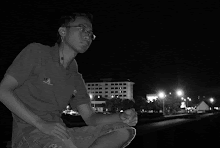Kotagede Mosque, the Oldest Mosque in Yogyakarta
Wandering through Kotagede will be complete only if you have visited the Kotagede Mosque, the oldest building for Moslems to say their prayer in Yogyakarta. This building is often skipped by tourists who are going to the cemetery complex of Mataram Kings, whereas in fact the building is not less enchanting. In fact, there are stories of the instruments in the mosque that was built in 1640s.
Before entering the complex of the mosque - in the parking area - you will see a banyan tree that has been there for hundreds years so that people name it "Waringin Sepuh" that means an old banyan tree. This tree will bring luck to anyone who is praying under it when he or she gets two leaves with one facing up and the other facing down.
Approaching the mosque complex, you will find a gateway. Right in front of the gate, there is wall in the shape of L letter. Some pictures symbolizing the kingdom are carved on it. Such buildings represent Sultan Agung's tolerance to local inhabitants who embraced Hinduism and Buddhism and took part in building the mosque.
Entering the mosque yard, you will see green inscription as high as 3 meters signifying mosque renovation done by Paku Buwono. The base of the inscription is of square form and on top of it is the crown as the symbol of Surakarta Kingdom. A clock functioning as time reference for praying is attached to the southern side of the inscription.
We learn from the inscription that Kotagede mosque was built in two stages. The first work done during Sultan Agung reign was small mosque that was called langgar because of the size. The second building was done by Paku Buwono X, the King of Surakarta Kingdom. The difference of those two building lies on the poles; the one built by Sultan Agung was with wooden poles while the other done by Paku Buwono X was with iron poles.
The main part of the mosque is of Javanese style namely limasan that is characterized by pyramid-form of the roof and two different rooms functioning as main room and verandah respectively.
You will see ditch encircling the mosque before you enter the main building of the mosque. It functions as drainage for the water flowing from a place where people take water from the north part of the mosque to clean them before praying. Now, the ditch functions as fishpond after being renovated with porcelains being fitted to the base of it. In order to ease people to enter the building, small bridge is constructed of woods arranged side by side.
Outside of the main building of the mosque, there is an old drum placed beside a kentongan (traditional Javanese wooden drum that is struck to sound alarm). The drum that is as old as the mosque was a present from Nyai Pringgit from Dondong village of Kulon Progo Regency. Thanks to her presence, her descendents were rewarded privilege to stay in the area around the mosque that later was named Dondongan. The drum is in use this time as time signal for praying.
There is a speaker platform made of finely carved wood inside the mosque, beside the place where imam leads the prayer. The platform was given by Sultan Agung who got it when he visited a Regent in Palembang on his return from Mecca. It is now rarely used in order to keep it from being damaged. For daily uses, people replace it with small platform.
Walking around the mosque, you will see different encircling walls. The left wall was constructed of bigger bricks in size with brighter color and marble-looking stone on the surface with Javanese writings on it. The other wall on the other part is of less bright bricks with smaller size and no decoration on it. The left wall was built during Sultan Agung reign while the other wall was the result of the renovation done by Paku Buwono X. The wall constructed during Sultan Agung reign was cemented by using the juice of sugar palm for stronger bound.
This old mosque still looks vivid to the present time. People make use of it form religious activities. When praying time comes, many people will come to it. After praying, many of them stay there to communicate to each other, to learn Koran or even to take a nap.

0 komentar: